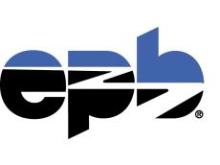Fast, affordable Internet access for all.
competition
FairPoint unfairly competing with UMaine?
Even if the company was competing directly with UMS, at least Maine residents could be certain the University will even exist a year from now. But as it stands, Fairpoint isn't competing with the University of Maine. They're competing with a public private partnership of which the University is only a member. Applications for Federal funds are open to public entities and private companies. Given recent history, giving taxpayer dollars to somebody other than the regional dysfunctional incumbent might not be the worst idea in the world.Bangor Daily News argues that rural Maine cannot afford to fight over who will expand broadband access. Unfortunately, Bangor Daily News' why-can't-we-all-just-get-along approach ignores the very real damage Fairpoint has already done to the state. Their suggestion that these competing networks just "be merged" seems like a call for open access but ignores the need for Fairpoint to maximize profits (right after it gets out of bankruptcy) rather than invest in communities. The larger point is ominous: the idea that large institutions should suffer with whatever crummy service Fairpoint provides (at the high prices they will provide it) in order that Fairpoint can expand its poor DSL service to rural areas, misses the important point that Fairpoint cannot and will not offer the services that Maine needs. As Mayor Joey Durel of Lafayette suggested, maybe Maine should just send its jobs down to Lafayette, where they are building the necessary infrastructure for the future.
Free Press Responds to 'Sloppy' Incumbent Broadband Arguments

The American Recovery and Reinvestment Act of 2009 directed the Federal Communications Commission (FCC) to develop a national broadband strategy. FCC invited comments and then invited replies to those comments in summer 2009. The Free Press Reply Comments deserve to be singled out for revealing some of the lies of large telecommunications companies like Verizon, AT&T, Comcast, Qwest, and others. It also describes many of the ways that these companies harm the communities that are dependent on them for essential services. I've highlighted some passages below that show the ways in which these companies put profit above all else. These companies claim that regulation discourages investment and deregulation (allowing a higher degree of concentration or larger monopolies) encourages increased investment in better networks - an incredibly self-serving claim that Free Press shows to be false on pages 13-29.
Competition -- meaningful and real competition -- and not regulation is the primary driver behind investment decisions. Where meaningful competition exists, incumbents are compelled to innovate and invest in order to maintain marketshare and future growth. Where competition is lacking -- such as it is in our broadband duopoly -- incumbents will delay investment, knowing full well they can pad their profits on the backs of captured customers who have no viable alternatives. (Page 14)
Regulations like open access and non-discrimination encourage competition and should be strengthened. Free Press offers an in-depth explanation of how Verizon has dumped millions of customers on other companies that clearly could not handle the burden.
Verizon began the purging of less lucrative areas with the sale of Verizon Hawaii to the Carlyle Group in 2005, a company that had no previous experience in operating telecommunications services. By Dec. 2008, the company, now called Hawaii Telecom, had lost 21% of customers and filed for bankruptcy. (Page 26)
Verizon then sold most of their New England lines to Fairpoint, which is currently heading for bankruptcy. Fairpoint's customers are not the only ones suffering - the independent companies that resell services over that infrastructure are also suffering because Fairpoint is utterly unable to meet its obligations.
UTOPIA's Roller Coaster Ride Continues
Nation's Largest Citywide FTTH Network to be Completed Next Year
"There are two primary components to building this system. One component is taking longer than we thought and the other is happening much faster than we anticipated", said Harold DePriest, President and CEO. "The end result is that services will be available to the entire cities of Chattanooga, East Ridge and Red Bank by summer of 2010." DePriest says once in place, EPB's fiber optic network will be the largest of its kind in the country.However, Chattanooga has suffered the same problem that has plagued other publicly owned broadband projects around the country: incumbent telco and cableco lawyers. Comcast has sued Chattanooga in multiple courts in an attempt to limit competition (see here, here, here, and here for a few examples). As with these cases across the country (from Monticello, MN to Bristol, VA, to Lafayette, LA), the incumbents have lost the cases but successfully slowed the build-out, which hurts the community while padding company profits for an extra couple of years. The network will offer symmetrical speeds of 10-50Mbps while keeping costs lower than the standard prices in the market.
Broadband Policy: Beyond Privatization, Competition, an Independent Regulation
During the last 25 years, telecommunication has moved away from government–owned or regulated monopolies toward privatization with competition and oversight by independent regulatory agencies — PCR policies. We present data indicating that PCR has had little impact on the Internet during the last ten years in developed or developing nations, and discuss the reasons for this. We then describe several ways government can go beyond PCR, while balancing needs for next generation technology, decentralized infrastructure ownership, and immediate economic stimulus. We conclude that there is a need for alternatives to the expedient action of subsidizing the current Internet service providers with their demonstrated anti–competitive bent. The decisions we make today will shape telecommunication infrastructure and the industry for decades.
Frequently Asked Questions
F.A.Q.
- What exactly is a Community Fiber Network?
- Who offers services?
- What does public ownership mean?
- Why publicly owned? Aren't private companies more efficient?
- I heard there is tons of dark fiber available - why do we need more fiber?
- What if a better technology comes along in a few years?
- Doesn't fiber break easily?
- Don't existing companies already have fiber networks?
- DOCSIS 3, isn't that as good as fiber?
- Should government compete with the private sector?
- Do we really need faster connections?
- Symmetric? Asymmetric? Huh?
- Why not wireless?
- What happened to the whole muni-wireless thing?
- What about WiMAX?
- What about broadband over powerlines?
Answers
What exactly is a Community Fiber Network?
A Community Fiber Network is a community-owned broadband network that uses fiber-optic cables to connect all subscribers. It can offer phone, television, and Internet access. The capacity on the network is so great that it could offer tens of thousands of television channels while allowing thousands of people to talk on the phone while still offering Internet access at faster speeds than a cable modem system or DSL currently offer.
-
In some communities, the local government (Monticello) or public power utility (Chattanooga) has a department that provides video, phone, and Internet services. In others, the network is only open to private service providers who compete for customers on equal terms (this would be an open network, Report: Open Access: The Third Way). Some cities have used a hybrid approach where the city offers services and offers non-discriminatory wholesale access to other providers and competes against them.
Communities generally would prefer not to offer services; unfortunately, the pure open access or open services model often does not generate enough revenue to pay the start-up costs.
What does public ownership mean?
Public, or community ownership is discussed in greater depth on our public accountability page. Briefly, it means that the public has some measure of self-determination over the network. Much like the water department is accountable to the public and therefore does not raise water rates unreasonably, those running the network would be accountable to the public. If the community decided to offer subsidized connections to those living below the poverty line, they could do that. If they wanted more than a few community channels, they could easily create them. (Report: Breaking the Broadband Monopoly)
Why community owned? Aren't private companies more efficient?
We have an entire page discussing the importance of who owns the network. The thumbnail sketch is that the community now depends upon broadband and cannot rely upon private companies to act in the community's best interest. Refusing to upgrade infrastructure may be more profitable for a private company, but damages the community. (Policy In-Depth: Debate over Muni Broadband Competing With Private Sector)
I heard there is tons of dark fiber available - why do we need more fiber?
Dark fiber, or fiber cables that are currently unused (or "unlit") is not always in convenient places and rarely extends all the way to homes. While dark fiber may help in some areas, it is unavailable in most.
What if a better technology comes along in a few years?
As we discuss on the page dealing specifically with fiber networks, fiber networks are future-proof. The speeds capable on fiber networks are still increasing with new electronics. These networks will have paid for themselves many times over before becoming obsolete.
-
As we discuss on the page dealing specifically with fiber networks, fiber cable deployments are surprisingly strong. There are problems when fiber is cut, but there are similar problems when phone lines or power lines are severed. That said, they have proven more resilient than power lines in ice storms and tornadoes.
Fiber networks have been used for decades and the tools for keeping them running 24/7 are mature.
Don't existing companies already have fiber networks?
Most telecom and cable companies have fiber as parts of their network, but they do not connect everyone to the network with fiber. That said, Verizon is increasingly building fiber all the way to homes in some areas of its footprint. The others run fiber to your neighborhood but connect the last mile with slower copper wires that create a bottleneck, resulting in slower speeds that leave us less competitive in a world increasingly requiring faster speeds. Non fiber-to-the-home networks cannot offer the same experience or guarantee the same high level of service that a true Community Fiber Network offers. You can learn more about fiber on our fiber page. (see: AT&T CEO Admits DSL is Obsolete)
DOCSIS 3, isn't that as good as fiber?
DOCSIS 3 is a standard for cable modem networks that will greatly increase the available speeds offered by cable companies. However, the cable network remains a massively shared loop, leaving it vulnerable to a few subscribers hogging bandwidth and degrading service for everyone else. We briefly discuss DOCSIS 3 on the fiber page
Should government compete with the private sector?
Statements like "the government should not compete with the private sector" ignore the many ways in which we already accept important government services that "compete" with the private sector. Libraries might take customers from bookstores. Police forces compete with private sector security guards.
But in other ways, government is clearly crucial to the private sector. Whether by building and maintaining roads, educating the future workforce, or offering clean water at very affordable prices, our private sector economic growth over the past century depended on public infrastructure.
When phone and cable companies try to make this into a public v. private argument, they miss the fact that the question of ownership is actually one of phone/cable companies against everyone else. When the private phone/cable companies refuse to invest in competitive connections, everyone suffers. Private businesses have to pay more for slower services than their competitors in other communities.
The idea of a level playing field between government and the private sector misses fundamental differences between the two. The private sector has a mission to maximize profit and shareholder value, primarily in the short term. The public sector maximizes social benefit and focuses on the long term. Understanding these differences in important to understanding why infrastructure has historically been owned or closely regulated by the public sector. We would not want GM owning the roads; they would find it quite profitable to ban competing car companies or force them to pay more to access the same roads.
Broadband networks have become infrastructure, and private companies should not be the sole arbiters of who gets 21st century infrastructure and when they get it.
(Report: Publicly Owned Broadband Networks: Averting the Looming Broadband Monopoly, Free Press Responds to 'Sloppy' Incumbent Broadband Arguments)Do we really need faster connections?
Some of us do. When Eisenhower decided to push the Interstate system, it was not with the idea that everyone would have to use it. However, business and government functions were greatly improved by this massive infrastructure project. Over time, more and more people recognized its value.
We need more choices. Those that need fast and affordable connections should have the option.
-
Symmetric connections have the same downstream speeds as upstream. This means that you can send a file to someone else just as fast as you could get it from them. Asymmetric connections tend to offer much slower upload speeds, which can slow usage of the modern Internet to a crawl. Both cable and DSL networks are typically asymmetrical by design.
10 years ago, when DSL and cable offered cutting edge, fast speeds, most Internet users simply consumed content and they did not need faster upload speeds. However, the Internet has changed and people increasingly want to send large files that require faster upload speeds (for instance, parents want to send photos and videos of their children to family members living across the country).
A purely symmetrical experience is less important than the objective to have fast speeds at affordable prices. But having upload speeds at 1/10 the download speed is clearly too asymmetric to take full advantage of the modern Internet.
-
We discuss the merits of wireless here. In short, Wi-Fi is great for mobility, but does not offer competitively fast speeds or the reliability of wired connections. Fiber is a long term investment that facilitates wireless, but wireless is not a replacement for a full fiber-to-the-home network.
A fiber network could actually lay the groundwork (literally) for a wireless network. The fiber network would offer more potential locations to add wireless access points, which need backhaul.
What happened to the whole muni-wireless thing?
Communities around the country have investigated wireless networks. Some entered into contracts with private companies, such as Earthlink, who promised to build the networks at no cost to the city. When Earthlink failed to make a profit, for a variety of factors, it turned the networks off and abandoned the cities. These are the failures that have led the press to pronounce all municipal wireless efforts as dead.
Municipal wireless is far from dead. There are a variety of business models that are achieving variable levels of success. The main advantage of wireless is that it allows users to be mobile. However, mobility comes at a price - wireless connections tend not be as reliable or fast as wired access (especially when connected to a full fiber-to-the-home network. More information on wireless here.
-
We touch on WiMAX in our wireless page. Briefly, WiMAX is unproven and cannot compare with fiber in its ability to reliably deliver the fastest speeds. Additionally, the nature of WiMAX locks subscribers into a single vendor in ways that do not encourage competition. (see: Stories on WiMAX)
What about broadband over powerlines?
Broadband over electrical power lines is ultimately too expensive, delivers speeds that are too slow, and has too many bad side effects.
Additional questions may be posed to broadband@muninetworks.org.
Bureaucrats as Entrepreneurs: Do Municipal Telecommunications Providers Hinder Private Entrepreneurs?
Empirical Study: Does Municipal Supply of Communications Crowd-Out Private Communications Investment?
Who Will Own Minnesota's Information Highways?





